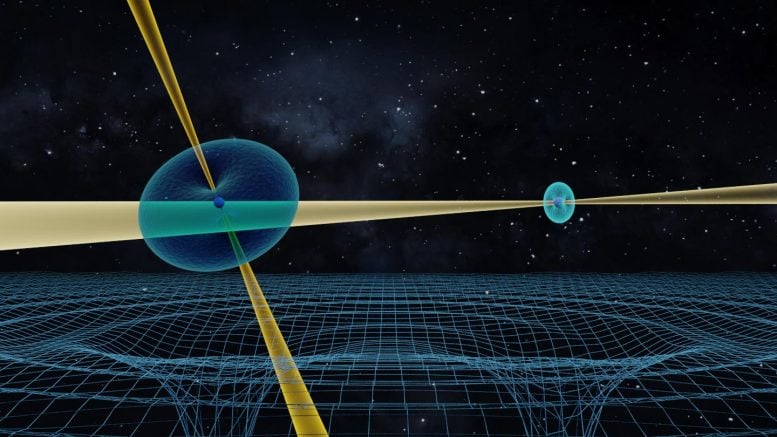EINSTEIN'S THEORY OF RELATIVITYTo understand special relativity you must first familiarize yourself with the
speed equation:
speed (s) = distance (d)/time (t)
The
speed of light is the same for all observers, and this is known as
“c” for constant (as in c in E=mc2)
where is E is energy and M is the mass of an object). So the speed of light for any observer is constant regardless of the speed the observer is going. For the speed of light to remain constant, something in the speed equation has to give way, that something is time. It turns out time slows down when you travel faster and faster, nearing the speed of light. What could be 10 minutes for the object could be 20 minutes for the observer. So what’s the future for the fast-moving object could be the past for the slow-moving observer, and vice versa.
This relativistic effect is called time dilation. So the faster an object travels, the slower the time passes. That’s why moving clocks are slower than stationary ones. For example, observer A is on a slow-moving train called "train A". She measures time using her wristwatch. Observer B, passing train A at high speed, has the exact copy of A’s wristwatch. Yet, from the point of view of A, B’s wristwatch runs more slowly than her own. And this is why Einstein said “time is an illusion”.
According to
Merrian-Webster’s definition, spacetime is “a system of one temporal and three spatial coordinates by which any physical object or event can be located”. So if spacetime isn’t constant, then what is? The spacetime interval. The spacetime interval is the spacetime difference between two separate events. The equation:
(Spacetime interval)2 =
(the distance between two events)2 – (speed of light)2 x (the time between two events)2
Let's reach out to a physics professor for an explanation of what this means... physicist Professor Brian Cox of Manchester University gives an example: "The Sun is eight light-minutes away – it takes light eight minutes to get from the Sun to the Earth. If the Sun exploded now, it will take me eight minutes to notice. So let's say the Sun explodes, and from my point of view, four minutes elapsed. I still don't know it's exploded, so there's nothing the Sun can do to cause something to happen on the Earth – it's completely disconnected from it for eight minutes".
Can the events of time be reversed? Let's say I throw a ball and knock you off the chair on which you are standing... and we all agree that it was the ball hitting you that knocked you off the chair... now, can those events be reversed in that can you fall off the chair before I throw the ball? Obviously, the answer is no.
Now... what if time was not created... what if it has always been there from the getgo? If it had no beginning, then it will have no end... and the resulting concept is that we are always living in the PRESENT... all as it is.





